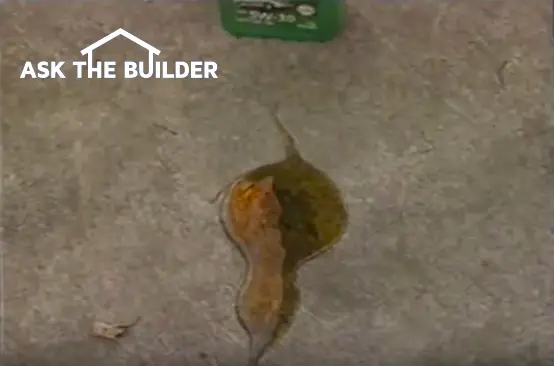Seriously, there are two associations that promote concrete and its correct use. They are progressive and their recommendations are backed up with tens of thousands of hours of scientific investigation and testing. The two groups are the Portland Cement Association (PCA) (www.cement.org) and the American Concrete Institute (ACI)(www.concrete.org). Here are some guidelines they suggest you follow, if you want trouble-free concrete in cold climates:
Low Water to Cement Ratio
The cement in concrete is the glue that holds everything together. The more water you add when you mix, the weaker the concrete will be for a given amount of cement. Think of cement as sugar in iced tea. If you add just a little sugar the sweetness level is weak. Add lots of sugar and you get some sweet stuff!
A Four Inch Slump - The MAXIMUM Allowed
Slump refers to the stiffness of the mix. The lower the number the stiffer concrete is. You can actually mix and pour concrete with a 1 or 2 inch slump! Have you seen highway median work where the crash barrier is done with a forming machine? The concrete is so stiff that it can stand four feet tall moments after it is poured - yet it attains a high strength once cured and dried. You don't need lots of water to make concrete strong. The addition of water to a 5 inch or higher slump just makes it easier to pour.
Six Bag or 4,000 PSI Mix
You must have enough cement in each cubic yard to make sure it is strong. For concrete exposed to freezing temperatures you want a minimum of six bags (564 lbs.) of cement per cubic yard or a design strength of 4,000 pounds per square inch.
Want perfect concrete work? Find a pro by using my Concrete Work (Sidewalks, Driveways, Patios & Steps) Checklist. I offer a 100% Money Back Guarantee.
Air Bubbles
Special chemicals can be added to concrete as it is mixed. These chemicals create micro-air bubbles within concrete. The air spaces become shock absorbers as water freezes within concrete. Make sure your concrete is ordered with air - often called air entrained concrete.
Proper Finishing
Just as you can't add extra water to mixed concrete, you can't add water during the finishing process. This added water dilutes the cement paste in that localized area.
Slope
Concrete slabs need to have good drainage. This means that they need a slope of 1/8 inch per lineal foot minimum to shed water. Pooled water that freezes on the surface is bad....bad.......!
Adequate Curing
As concrete dries, it needs water to complete the chemical transition called hydration. If you let too much water escape from the slab before the chemical reaction is complete, it simply doesn't become as strong as it should be. You can cure concrete by covering it with plastic, wet burlap that stays wet or by spraying it with a liquid curing compound. Don't forget this important step!
No Silicone!
If you feel the need to seal your concrete, do not use silicone sealers. These are film formers. You need a breathable sealant or water repellent. Top performers are those that contain silanes and siloxanes. These are chemicals that are similar to silicone.
Related Articles: Deicing Facts, Deicing Salt and Concrete, Magnesium Chloride & Deicing Salt Companies
 Get a
Get a 